Disclosure: Meeple Mountain received a free copy of this product in exchange for an honest, unbiased review. This review is not intended to be an endorsement.
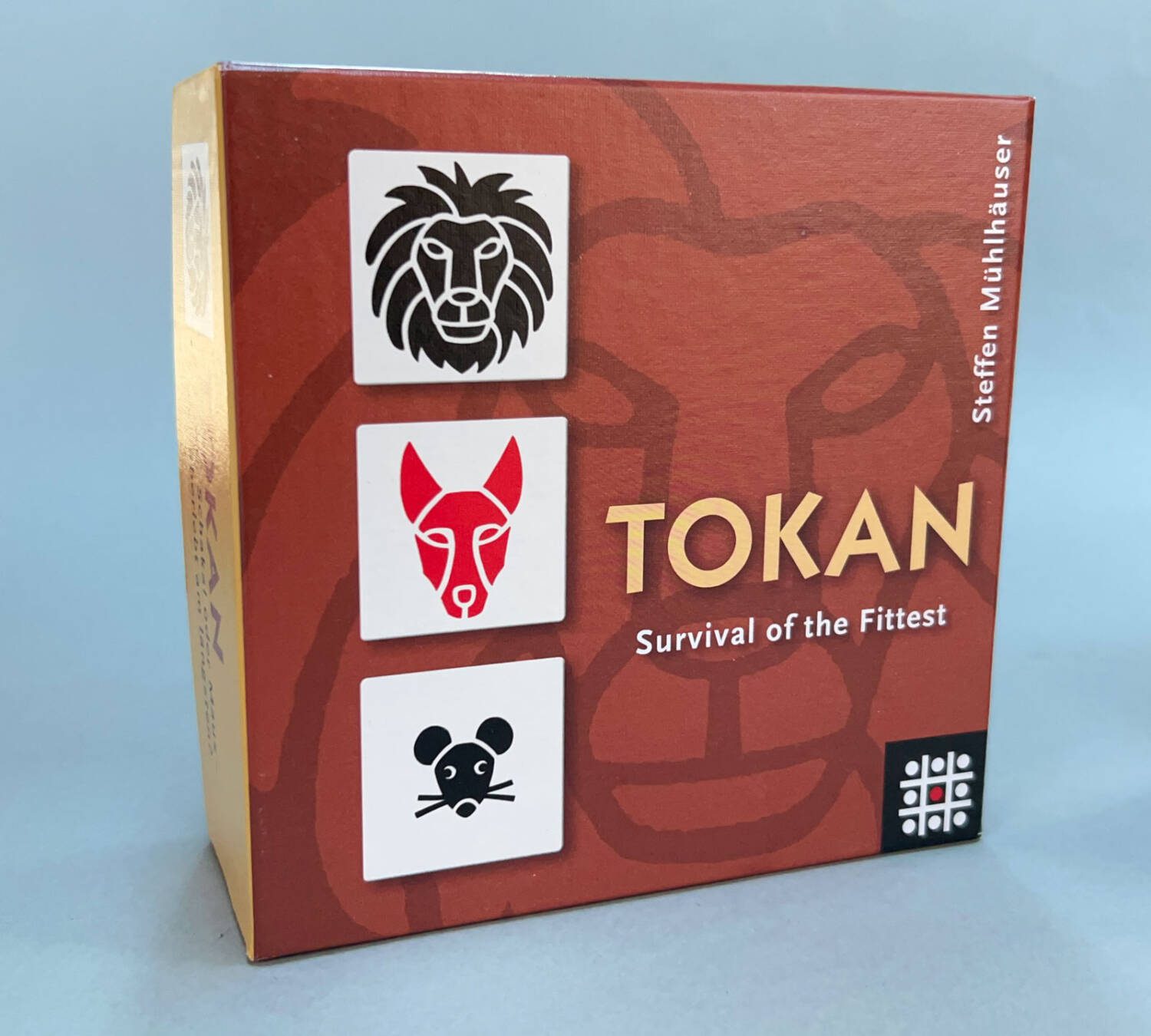
TOKAN is a two-player game of capture. Each player has 15 tiles that are divided into three different types, each having a variation on a shared ability. It’s easy to teach, quick to play, and is intriguing enough to warrant multiple plays each time you open the box.
As a capture game, the goal is to have the highest stacks of pieces—with your pieces on top—when the game ends. How you go about doing so is what makes TOKAN unique.
Setup & Play
First, players choose to play either black or red. Then you’ll take all 30 tiles and place them face down on a table and mix them up. Create a 5×6 grid from the tiles, turn them over and you’re ready to play.
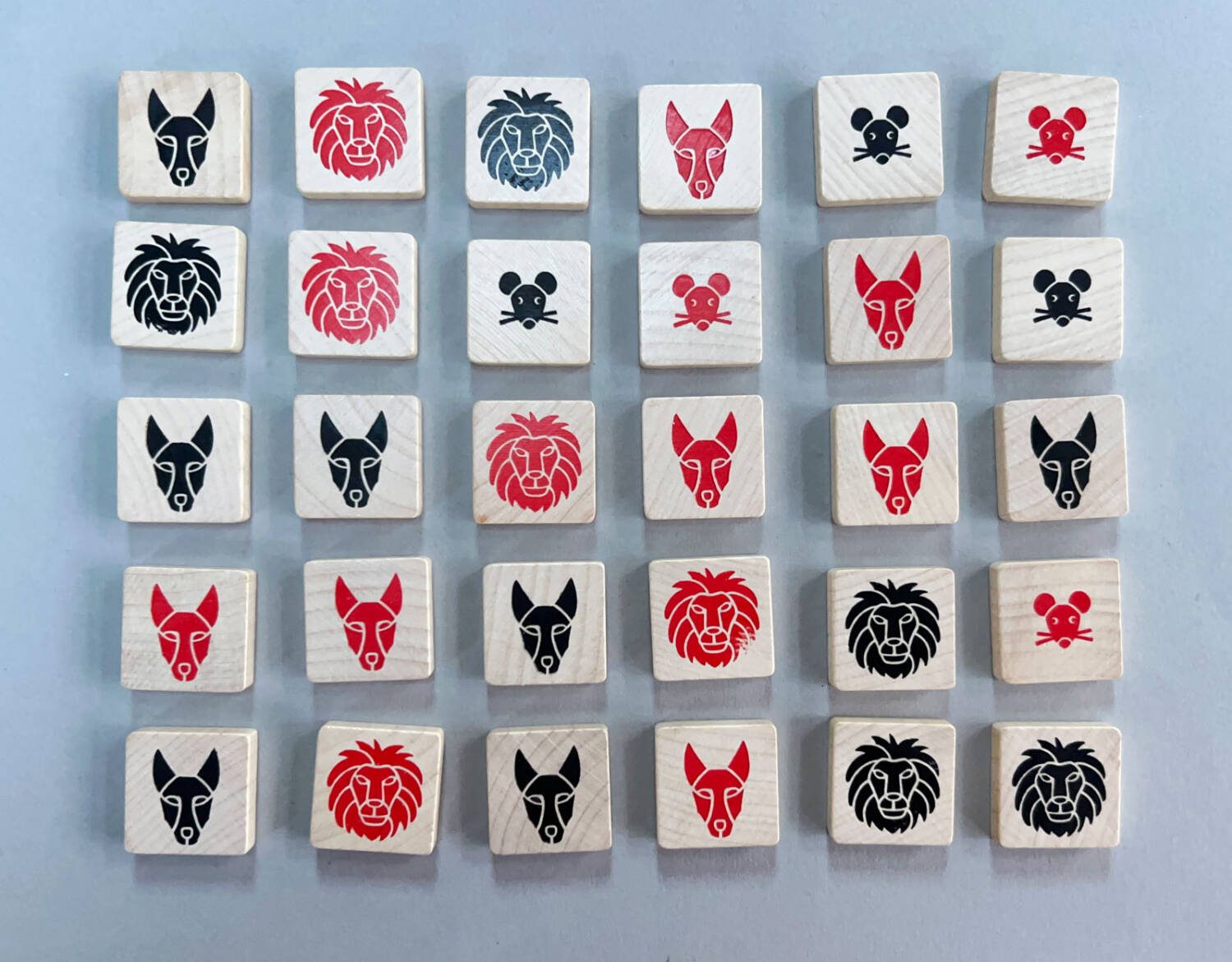
On a turn, you’ll move one of your animal tiles orthogonally and place it on top of another animal. You’d like to capture your opponent’s animals, but you can place a tile on top of a pile of your own pieces. (This can come in handy at the end of the game.)
Each player’s tiles consist of 3 Mice, 7 Jackals, and 5 Lions. Mice can only move on top of a tile adjacent to it; when they move, they cannot carry any tiles with them. Jackals move exactly two tiles away and can carry one tile underneath them. Lions must move three tiles and may carry two tiles with them.
There are only two other rules:
- When a piece moves, it must end up at least one level higher than the level it started on.
- After a piece moves, the remainder of the connected row or column of tiles left behind all move in the same direction to fill in the now empty space.
The first rule doesn’t require much explanation, but the second one may. As you play, the board will appear to collapse into itself as rows and columns follow
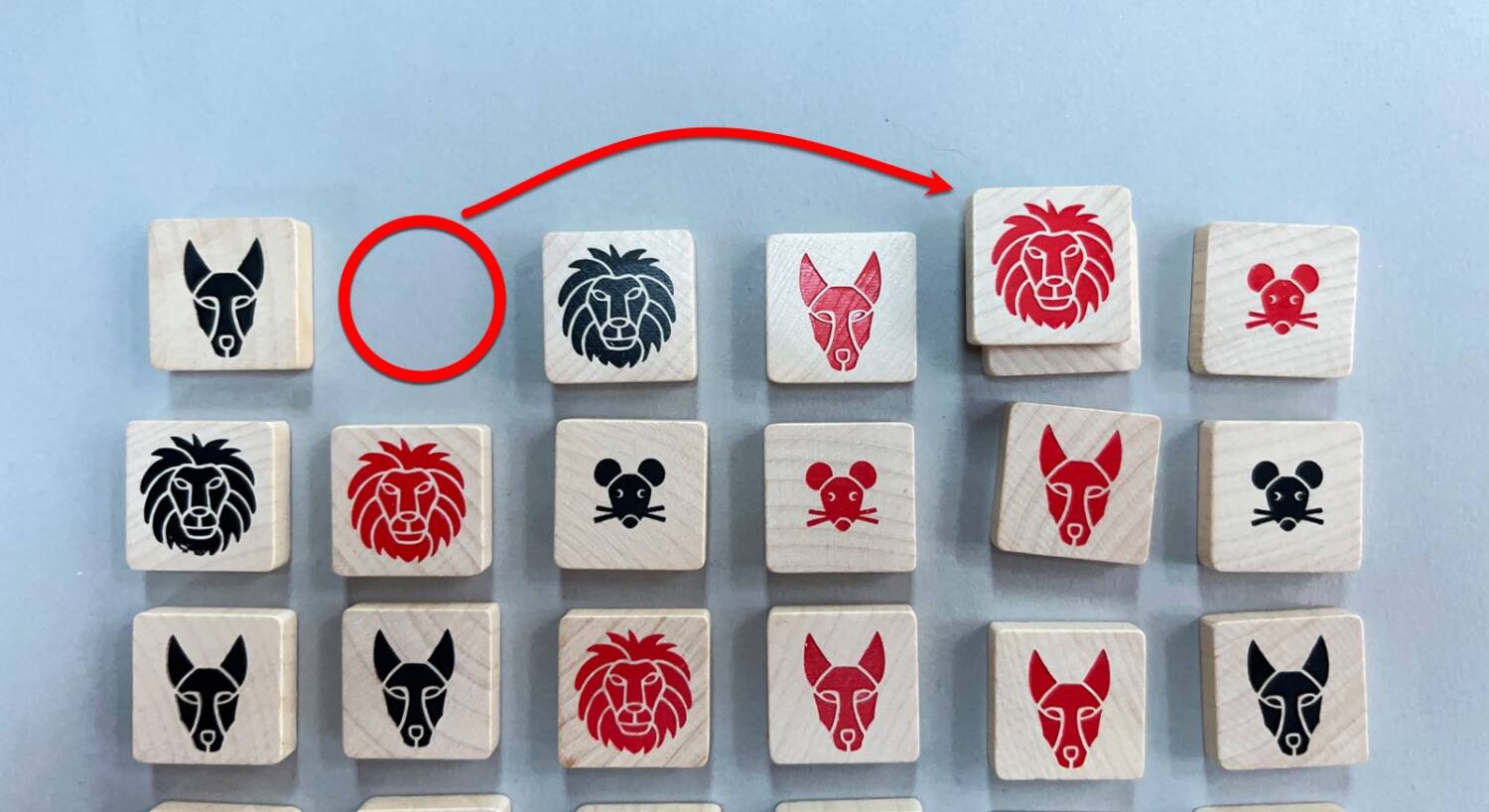
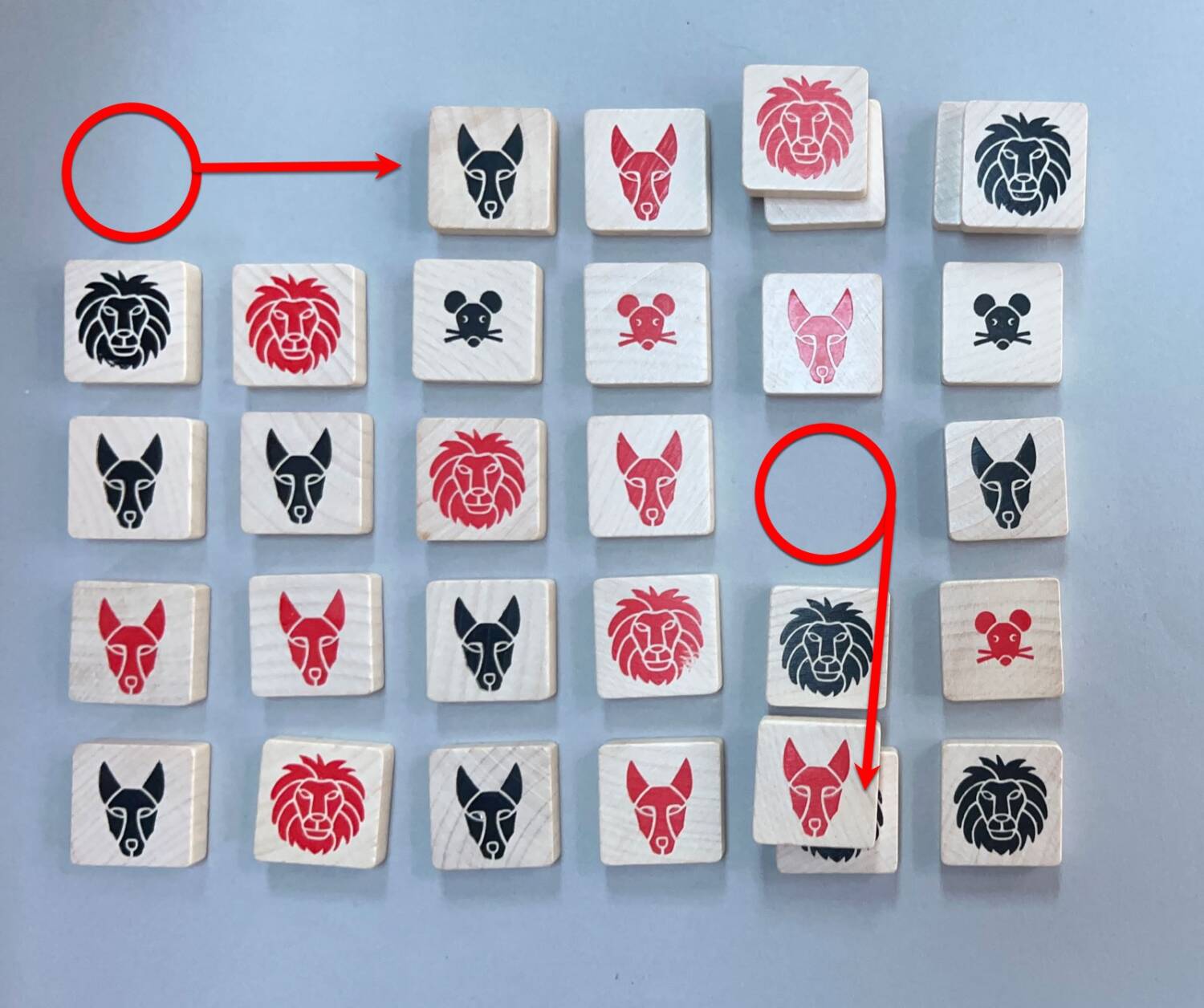

As the board squeezes into itself, you’ll need to keep a close eye on your pieces as well as those of your opponent. If you capture that piece, how many of your pieces can respond when that piece is captured on the next turn? Maybe it’s better to wait and hope a row or column condenses and improves your chances to make the final capture.
Once neither player can move, the game ends. Players stack their captured stacks—single tiles are not counted—and the one with the most pieces wins.
Thoughts
As easy as it is to teach TOKAN, the combination of carrying tiles based on the animal shown and the way the board constricts makes for some thinky gameplay. Add to that the rule that you score nothing for single tiles, and you quickly realize that your endgame—which comes far more quickly than you might imagine—strategy needs to start right after your first few moves.
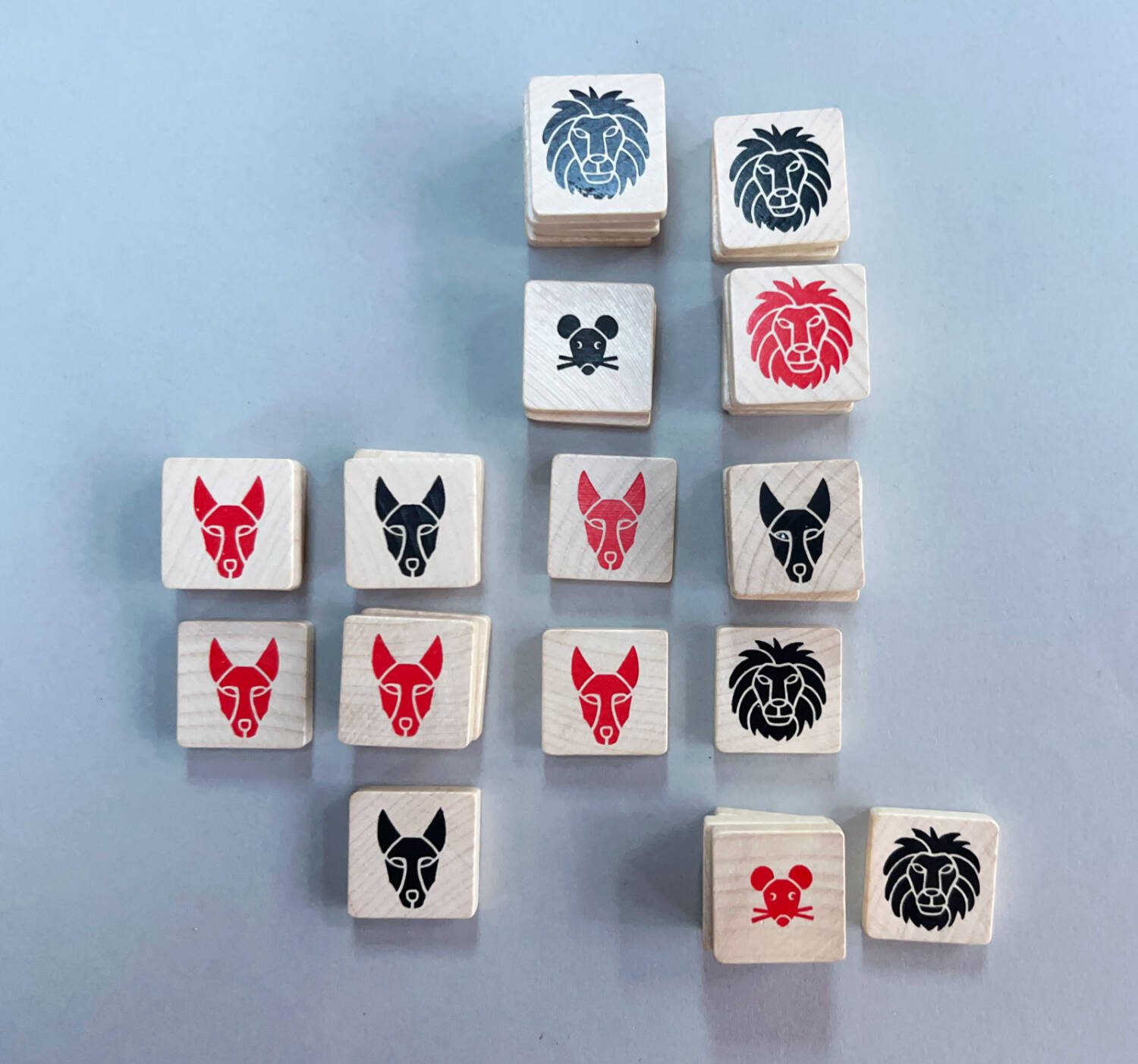
TOKAN has what I like in a small box abstract: good quality pieces that are both decorative and functional, an easy-to-understand concept, and enough tweaks to make for a fun and interesting game.
If you’re looking for a fun game that travels well, a new game for a session of shorter abstracts, or just a solid game to play with your partner and/or kids, give TOKAN a look. It’s a keeper.


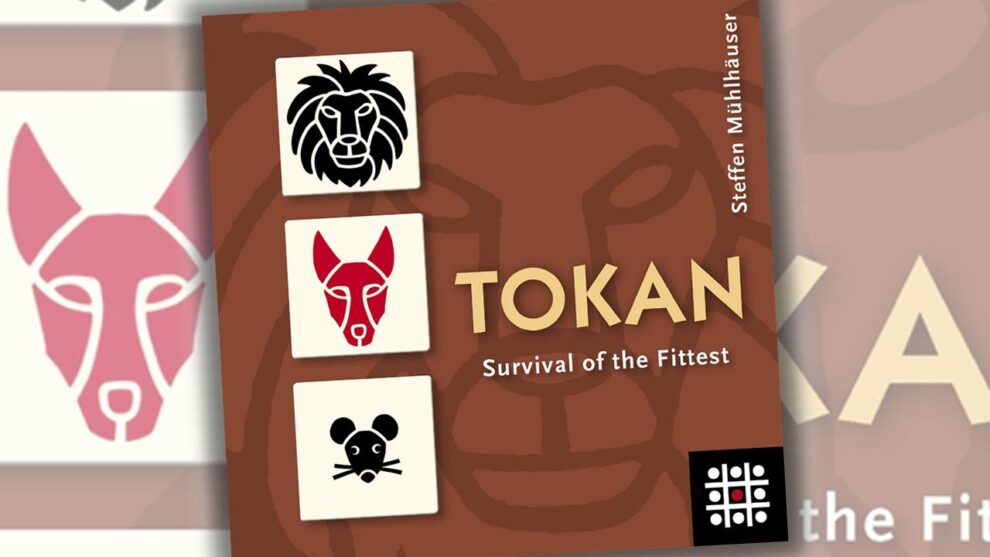

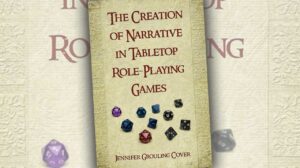






Add Comment